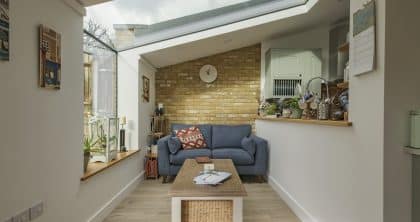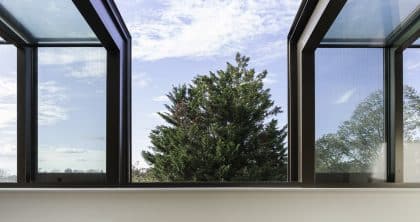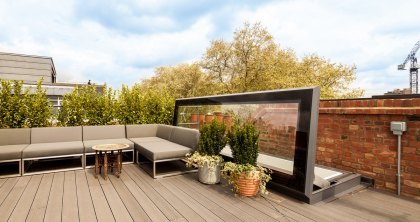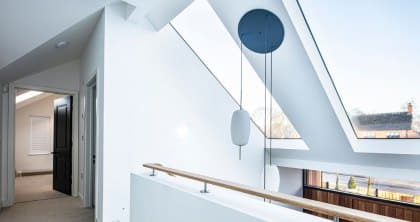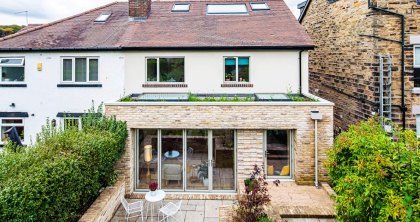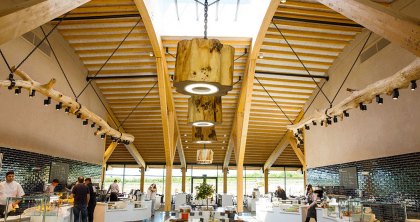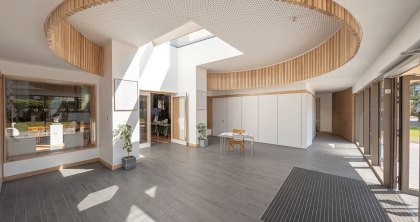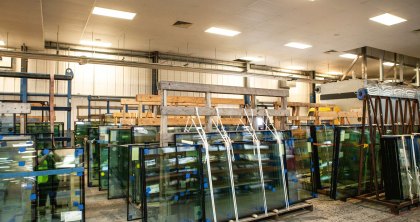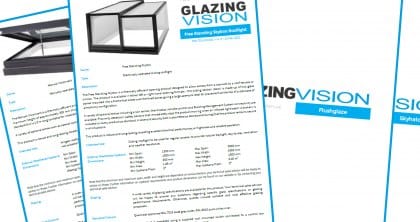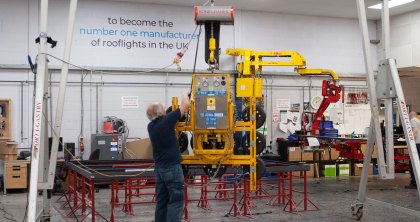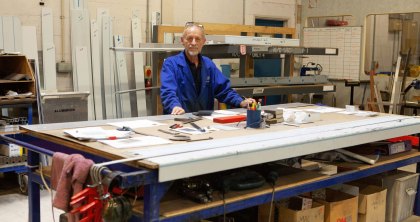- Home
- Rooflights
- Roof Windows
- Bespoke Service
- Inspiration
- Resources
- Guide to Extensions
- Approved Document L Whitepaper
- Guide to Specifying Glass in Rooflights
- Specifying Roof Terraces Guide
- Rooflights and Roof Windows Guide
- Inspirational Kitchen Design Ideas
- Thermal Performance Whitepaper
- Approved Document Q Whitepaper
- Approved Document K Whitepaper
- Guide to Improved Daylight & Ventilation
- Approved Document F Whitepaper
- Approved Document O Whitepaper
- Case Studies
- Blog
- ESG
- About us
- Contact us
Designing an access rooflight isn’t just about the glass structure overhead. There’s also the “access” part to think about — how will users approach the rooflight and what are the safety considerations?
Unless a rooflight is intended for maintenance purposes, where personnel will only use it on an occasional basis, the access will need to comprise more than a portable ladder.
Permanent stairs are generally a must when an access rooflight will be used regularly — either by maintenance teams or the public. They’re also necessary for dwellings, such as when a rooflight is used for accessing a patio or terrace.
But what kind of stairs should be specified for access rooflights? The right choice will depend on the specific circumstances of the project. Here are some things to consider:
Stair construction
In most cases, stairs should have consistent rise and goings. Risers are also recommended, although open risers are often preferable in access rooflight constructions, since they can increase the amount of natural light available. Open risers may be permitted in dwellings, but they will need to meet certain requirements to ensure safety.
For locations where space is limited, alternative staircase designs may be required, such as tapered or alternating treads, although the latter should only be considered as a ‘last resort’ and would not normally be accepted by Building Control as a suitable means of access for roof terraces.
Head heights
This is a key issue when it comes to moving between levels of a building and the Building Regulations state that there should be a minimum headroom of 2m (measured from the pitch line of the stairs).
One of the benefits to using a box rooflight is that it can help you achieve the headroom required. When specifying a rooflight, be sure to consider the actual thickness of the roof, as this measurement can often be thicker than expected. The frame profile of the rooflight should also be accounted for.
Box rooflights tend to have sliding sections of glass instead of hinged openings. These are normally controlled at a distance — via wall-mounted control unit or remote — to ensure that the rooflight will be open and providing the open headspace above, by the time a user ascends to a level where the extra clearance is required.
Landings
The final step of any staircase should be considered a landing, and these will have minimum requirements depending on the situation. In dwellings, landings should have a minimum tread width of 400mm.
Doors swinging towards a staircase should be avoided next to a landing. In dwellings, doors are permitted at the bottom of a set of stairs, but the 400mm should be in addition to any space required for the door.
More information
To ensure your plans are appropriate, it’s recommended that you consult your local Building Control Officer for advice before commencing any works.
You should also consult Approved Document K. This document provides guidance for protection from falling, collision and impact and supports Part K of the building regulations.
To learn more about Approved Document K and its recommendations in relation to access rooflights, download our whitepaper: Approved Document K and Access Rooflights: A specifier’s guide to designing for roof access in dwellings.

